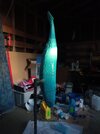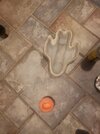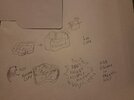Inlite
New Member
Apologies in advance that this isn't for a prop but this forum seems to be the best place for advice on making things.

I am making a large "space whale" which is 3d printed and now I am making a silicone mould of it. I plan to make a kind of rotocaster for it in the end.
So I am currently layering up silicone on the body of the whale and when that is a decent thickness ( 1cm/ half inch ?) then I want to make a 2-part fibreglass shell to support it for the casting.
The question is, I can foresee the silicone sagging inside the fibreglass shell. Am I on the wrong track? or is there a way to keep it against the support shell so I can roto mould it?

This is not the first thing I have cast in resin but the largest and most awkward so any advice would be much appreciated.

I am making a large "space whale" which is 3d printed and now I am making a silicone mould of it. I plan to make a kind of rotocaster for it in the end.
So I am currently layering up silicone on the body of the whale and when that is a decent thickness ( 1cm/ half inch ?) then I want to make a 2-part fibreglass shell to support it for the casting.
The question is, I can foresee the silicone sagging inside the fibreglass shell. Am I on the wrong track? or is there a way to keep it against the support shell so I can roto mould it?

This is not the first thing I have cast in resin but the largest and most awkward so any advice would be much appreciated.



